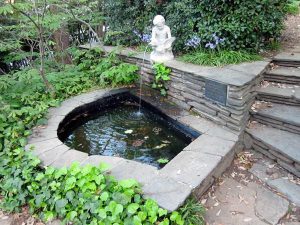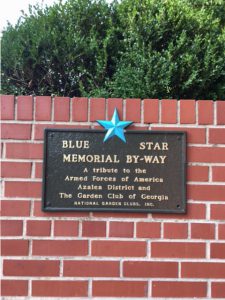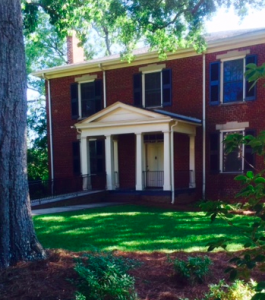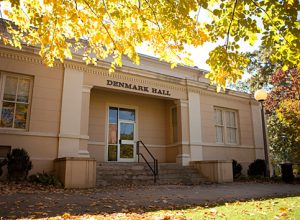The fountain is located in the Founders Memorial Garden, and has a plaque that reads “Dedicated in lasting memory to all who served in World War II. To those who gave much and to those who gave all.” The Founders Memorial Garden was originally established and built between 1939 and 1946 to honor the founders of the American Garden Club movement, but as time passed the garden it also became a memorial to all those who have served in the U.S. Armed Forces, primarily those of World War II. Little information was available about the fountain, and it is unknown whether the fountain has an official name. The year it was established in the Founders Memorial Garden, as well as who designed the fountain also remain a mystery. I believe the fountain was built shortly after World War II due to the garden being established in congruence with World War II. The Ladies Garden Club likely wanted to tack on the memorial to WWII due to the magnitude of the conflict, but this is all conjecture.
Resources
http://tclf.org/landscapes/university-georgia-founders-memorial-garden







